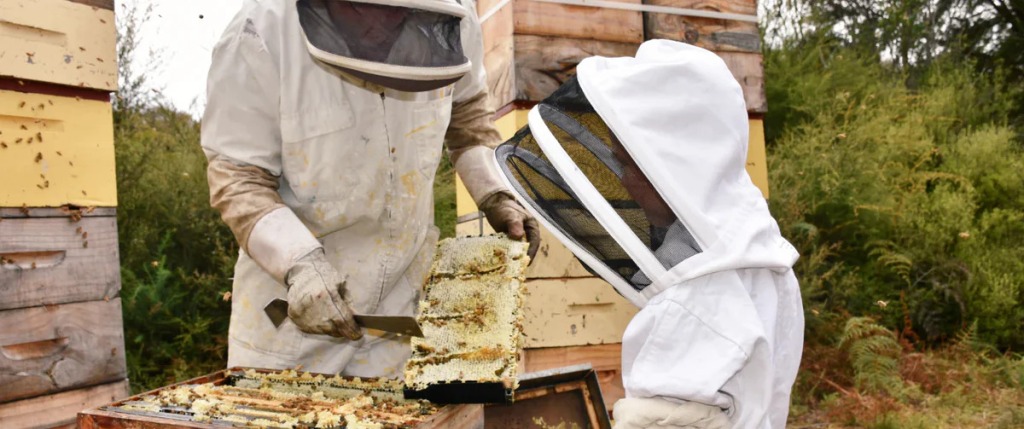A Sweet Start to Your Apiary Adventure
Introduction
Beekeeping is a fascinating and rewarding hobby that not only provides you with delicious honey but also allows you to connect with nature and contribute to pollinator conservation. If you’re considering taking the plunge into the world of beekeeping, this beginner’s guide will help you get started on your apiary adventure.

1. The Beekeeper’s Toolkit
Before you even think about getting your first hive, it’s essential to gather the necessary tools and equipment. Here’s a basic list to get you started:
- Beehive: This is the home for your bees. Langstroth hives are the most common type and are great for beginners.
- Protective Gear: Invest in a beekeeping suit, gloves, and a veil to keep you safe during inspections.
- Smoker: A smoker helps calm the bees and make hive inspections more manageable.
- Hive Tool: This is used to pry apart hive components and frames.
- Feeder: You’ll need this to provide supplementary food for your bees during the early stages.
2. Bee Breeds: Which One Is Right for You?
There are several bee breeds to choose from, but for beginners, the Italian honeybee is often recommended. They are known for their gentle nature, strong productivity, and disease resistance. However, do some research and consider your local climate when choosing the right bee breed for your area.
3. Location, Location, Location
The location of your apiary is crucial. Bees need access to flowers, so choose a spot with plenty of forage within a 3-mile radius. Ensure that your hive is placed in a sunny, sheltered location and faces east or south, as bees love morning sun exposure.
4. Hive Placement
Setting up the hive correctly is important. It should be level, off the ground to avoid moisture, and well-ventilated. Place the hive on a sturdy stand to keep it stable and protected from pests.
5. Swarming: Nature’s Way
Swarming is a natural process in which a new queen is raised, and the old queen, along with a portion of the colony, leaves the hive. While swarming may seem alarming, it’s usually a sign of a healthy colony. However, you can manage swarming through regular hive inspections and swarm prevention techniques.
6. Feeding Your Bees
During the early stages, your bees may need supplemental feeding to establish their hive and build comb. Sugar syrup is a common choice, but you can also use pollen patties for added nutrition.
7. Learning the Art of Hive Inspections
Regular hive inspections are essential to monitor the health and progress of your colony. You’ll learn how to spot signs of disease, assess the queen’s performance, and ensure that your bees have ample room to expand.
8. Harvesting Honey
Harvesting honey is one of the most rewarding parts of beekeeping. Wait until your bees have capped the honeycomb cells, which indicates that the honey is ripe for harvest. Use a bee brush to gently remove bees from frames before extracting the honey.
9. Beekeeping Associations and Communities
Joining a local beekeeping association or online beekeeping community can provide valuable insights, support, and mentorship. Experienced beekeepers are often more than willing to share their knowledge and help beginners get started.
10. Beekeeping Is a Lifelong Learning Journey
Remember that beekeeping is a continuous learning experience. Each season brings new challenges and discoveries. Be open to learning from your bees and your fellow beekeepers, and you’ll find that beekeeping can be a truly enriching and lifelong adventure.
Conclusion
Beekeeping is a deeply fulfilling hobby that connects you to nature, promotes pollinator health, and provides you with sweet rewards. Starting with the right knowledge and equipment, choosing the right bee breed, and creating a suitable hive location are essential steps for beginners. With time and experience, you’ll become more attuned to your bees’ needs and enjoy a truly buzzworthy journey into the world of apiculture.

Leave a comment